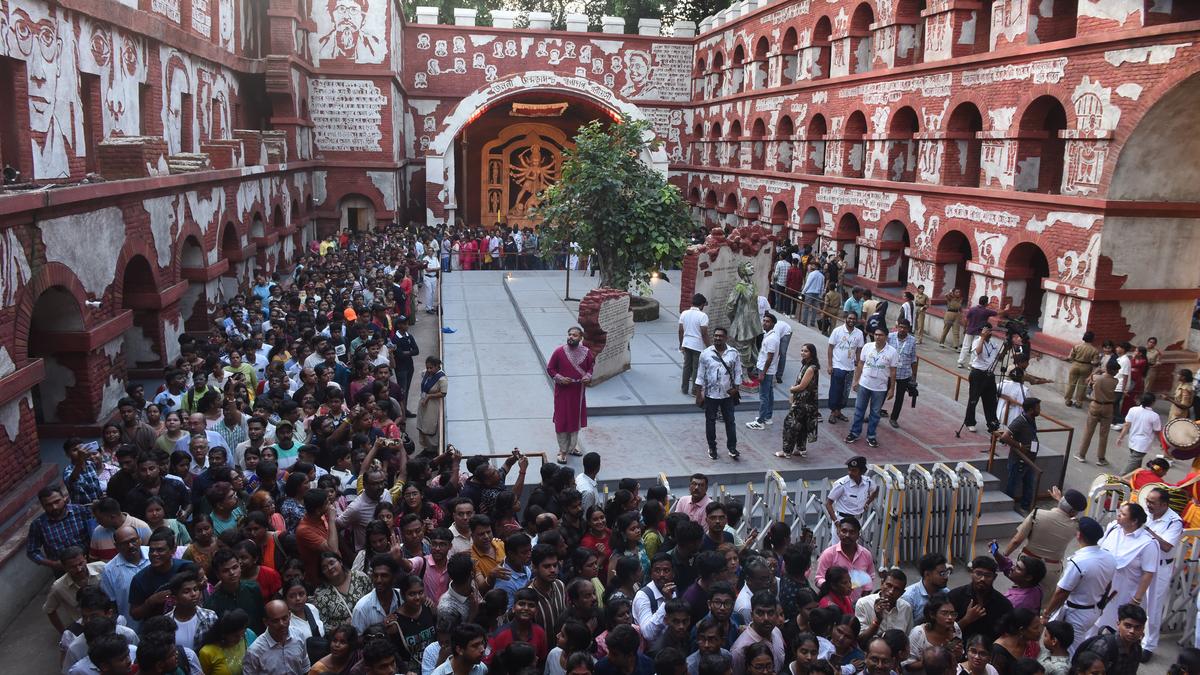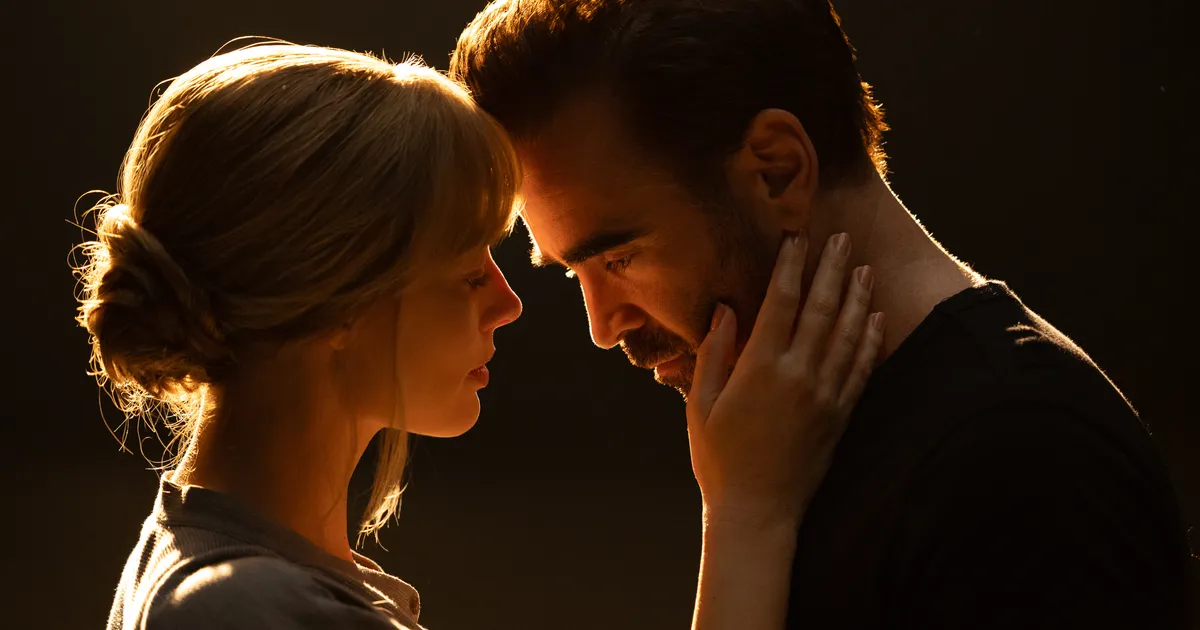Pre-partition Bengal, Indian freedom movement emerge as popular themes in Kolkata’s Durga Pujas

A slew of Durga Puja pandals in Kolkata this year have, in their themes, evoked imagery from pre-independence Bengal and the Partition, and highlighted the history of freedom fighters especially from undivided Bengal, in an almost museum-like pandal experience.
Durga Pujas located in different parts of the city like Suruchi Sangha in Kolkata’s New Alipore, Hatibagan Nabin Pally in Hatibagan, and Samaj Sebi Sangha in Lake View Road, have explored such themes.
Notably, the history of pre-partition Bengal was revived in the public consciousness and discourse, either through controversies surrounding the depiction of the Calcutta riots of 1946 in the film ‘The Bengal Files’, or with Trinamool Congress supremo Mamata Banerjee highlighting the role of Bengal in India’s independence, as part of Trinamool’s ‘Bangali asmita’ (Bengali pride) poll plank for the 2026 Assembly elections.
The theme of the famous Samaj Sebi Sangha Durga Puja, located on Lake View Road in South Kolkata, evokes imagery of the harmony that existed amidst the widespread communal strife of 1946, especially in the very neighbourhood it is situated in.
“Like many other parts of Kolkata, Lake View Road too was witness to communal riots in 1945/46. Samaj Sebi as a community club was born around that time, with the mission to organise Durga Puja as a way to bring people together despite the violence. In our theme, we reimagined the Lake View Road of 1946 where residents were united against communal rivalry and joined hands to lead rescue efforts,” the artist behind the Durga Puja, Pradip Das told The Hindu.
Samaj Sebi’s Durga Puja pandal, through its art, has reimagined the Lake View Road neighbourhood of 1946 — with its houses and streets — alongside pages from newspapers depicting communal violence, deaths, and loot. Bust sculptures of renowned residents like Leela Roy, Meghnad Saha and Jadunath Sarkar, are featured in the pandal.
According to organisers, Leela Roy, the founder of Samaj Sebi Sangha was known to have worked alongside freedom fighters of the time and would travel with a truck to carry out rescue operations for people of all faiths.
“We kept azaan as the audio playing inside this pandal to further drive home the concept of communal harmony in this neighbourhood. These are concepts we can only explore in a city like Kolkata,” Mr. Das said.
Suruchi Sangha, a popular Durga Puja in South Kolkata which draws several lakh visitors everyday, based their theme this year on Anushilan Samity, a secret society of revolutionaries in 20th century Bengal working to bring an end to British colonial rule.
The Suruchi Sangha pandal features several murals depicting freedom fighters and scenes from the freedom movement, along with text snippets in Bangla highlighting significant points from that timeline. Walkthroughs in the pandal are lined with bust sculptures of freedom fighters. Upon entering, visitors witness a lifelike sculpture of freedom fighter Khudiram Bose, with a rendition of the high court order spelling out his death sentence.
“Anushilan Samity was one of the first revolutionary groups to start armed resistance in pre-independence Bengal. While we know the famous freedom fighters who were part of it, like Khudiram Bose, Pritilata Waddedar, Prafulla Chaki and others, Anushilan Samity as a collective does not receive the spotlight that it should, in the pages of history. Hence, this is our attempt to recreate moments from that point in time and help people know more about it,” said Souvik Ray, one of the organisers of the Durga Puja.
He added that the murals depicting scenes from the violent colonial rule of the British and text snippets from history were created by scraping off plaster of paris.
“The whole pandal was envisaged as a prison. Alongside the murals we also have a section on the individual histories of the revolutionaries of Anushilan Samity,” he said.
Meanwhile, Hatibagan Nabinpally, located in the prominent Hatibagan area of north Kolkata, based their pandal and idol on the theme ‘Amar Desh Amar Durga’ (my country, by Durga), placing the goddess in the context of the Quit India movement and putting up murals and artwork on female freedom fighters from across the country.
In this puja, the idol of Goddess Durga stands against the backdrop of the Indian flag. According to organiser Tarna Dutta Chowdhury, the idol was designed in the Midnapore patachitra style, whereas demon king Mahisasura was created in a Western artistic style.
“When people visit our pandal, they will get a deep dive into the women who fought in the Quit India movement, including not just famous freedom fighters like Matangini Hazra but also some of the young female martyrs like Kanaklata Baruah of Assam who was 17, and Tileswari Baruah who was 12 when she died. Our pandal has been designed with murals and text snippets about these women, many of whom are lesser known,” Ms. Chowdhury said.



